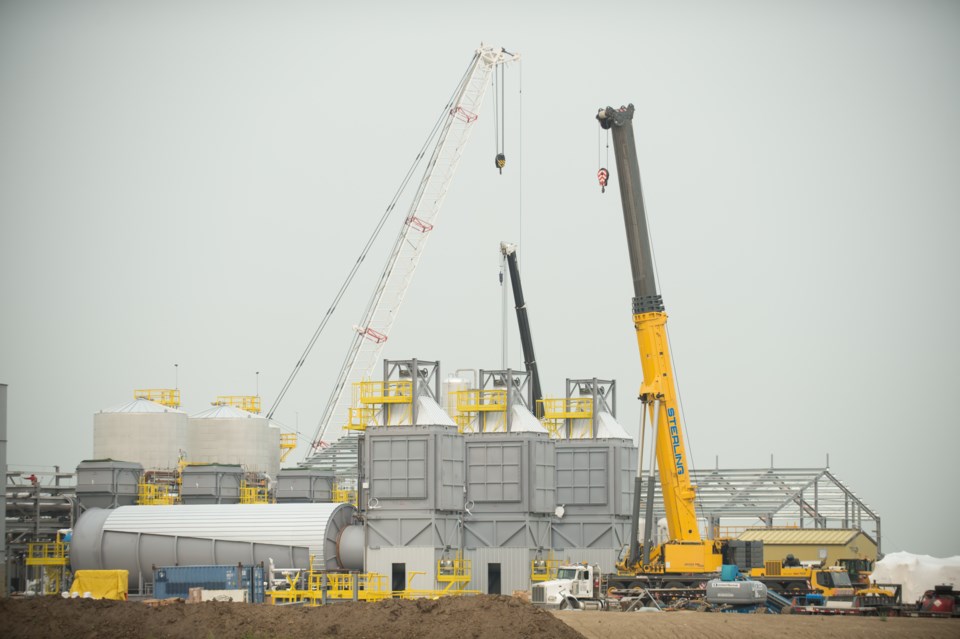Four years into this oil downturn, Lloydminster is something of a paradox. The retail and service sector seems to be growing by leaps and bounds, both on the west end of town and in the centre. There’s a new Hyundai dealership as well as a casino under construction on the Saskatchewan side. A stroll through the mall finds that, unlike other malls throughout Saskatchewan, nearly every bay was filled. There was even a La Vie en Rose lingerie store. That may not mean much to the typically male readership of this paper, but when we asked our female staff about this, they were quite surprised to hear that.
Lloydminster’s 2016 census data shows a population of 31,400 (two years into the downturn), up from 27,769 in 2011, when things were rocking. That’s an increase of 13.1 per cent, in down times, no less. Most communities would give their eye teeth (and numerous tax incentives, including perhaps for eye teeth) to have such growth at any time. And in 2001, that population was just 20,988.
There are even two Edo Japan locations in Lloyd, one in the mall, and a new one in the new retail development in the centre of town, just as a few blocks away. There’s new restaurants and new stores everywhere.
But a drive through the north end of Lloydminster finds street upon street of empty oilfield shops, victims of the downturn. These are shops that have not been filled by growth in the industry.
The mayor of Lloydminster, Gerald Aalbers, is a rarity in that he has spent a lifetime in the oilpatch, and is well aware of its realities. While positive on the community’s prospects and future, he is also keenly aware the community is not out of the woods yet. By his count, there are 35 racked drilling rigs in the community.
A large number of these are in the B&R Eckels yard. Of those, a significant number of those are singles, drilling rigs whose time is long past. It’s obsolete technology. The next time most of these rigs move, it will likely be in pieces as they are cut up. So just like one wouldn’t expect a farmer to use a 3-ton truck to haul grain anymore, similarly one shouldn’t expect many conventional singles to drill another hole.
There’s lots of talk about the huge price differential between West Texas Intermediate (WTI) and Western Canada Select (WCS) - US$26.75 as of Aug. 23, for an implied oil price of US$41.11 per barrel. While that is a huge implication, there’s another that we’ve been writing about for years – the transition from cold production to thermal production.
Specifically, we’re talking about the transition in the region from cold heavy old production with sand (CHOPS) to thermal, i.e. steam assisted gravity drainage (SAGD). While Husky has far and away been the biggest mover in this regard, we’re also seeing Black Pearl Resources do the same at Onion Lake and Sarafina at Edam and Meota.
Husky likes to make their cookie-cutter project 10,000 barrels per day in size. The rough numbers we estimate with that much CHOPS production might employ around 400 people, give or take, and upwards of 500 wells. That’s everyone from the field operators (and their relief) to grader operators, a couple service rigs running about, a flushby unit, some vac trucks cleaning out sand, pump shops to maintain all those pumps, a drilling rig continually drilling new holes, etc. That list isn’t anywhere near comprehensive. A 10,000 bpd SAGD thermal project employs, in total, less than 100. We’ve checked these numbers with numerous people in the industry in Lloydminster and there’s pretty broad consensus, among those we’ve spoken to, that these numbers are pretty close to reality.
Two years ago, when we discussed this scenario with people in the industry around Lloyd, some agreed with it, while others were skeptical. Now, that skepticism seems to have vanished.
If that is the case, the Lloydminster region may continue to see substantial increases in oil production. But that does not necessarily mean a lot more jobs in the patch. Indeed, there used to be four drilling rig moving companies in Lloyd. Now there is one. In part due to walking rigs or skidding those rigs on pads, it’s not nearly as busy as it once was when there were CHOPS wells being drilled by the hundreds each year. Since the downturn hit, extremely few CHOPS wells have been drilled in the Lloydminster area.
This is significant because much of the Lloydminster oilpatch, since the 1980s, has been built around CHOPS. But few, if any, CHOPS wells are being drilled anymore. With significant CHOPS decline curves, it means the nature of the Lloydminster oilpatch isn’t just changing, it has changed. Will the differentials have to tighten up significantly for CHOPS to get any more love? Will it need oil at US$100 per barrel? Or, like those single drilling rigs, is it an old technology that has seen its best days in the rear-view mirror?
That’s the biggest question facing the Lloydminster oilpatch in the coming years. How will the community, and its oil industry, deal with this transition to thermal? Perhaps at this upcoming oil show, we will find out. Â




